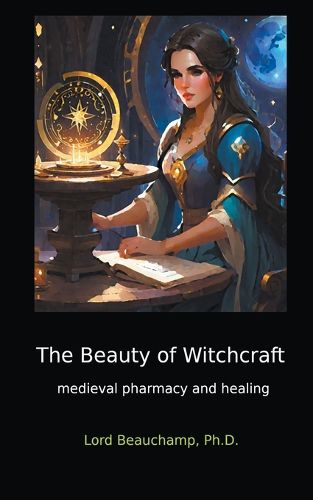Readings Newsletter
Become a Readings Member to make your shopping experience even easier.
Sign in or sign up for free!
You’re not far away from qualifying for FREE standard shipping within Australia
You’ve qualified for FREE standard shipping within Australia
The cart is loading…






This title is printed to order. This book may have been self-published. If so, we cannot guarantee the quality of the content. In the main most books will have gone through the editing process however some may not. We therefore suggest that you be aware of this before ordering this book. If in doubt check either the author or publisher’s details as we are unable to accept any returns unless they are faulty. Please contact us if you have any questions.
The perception and treatment of witches varied throughout different regions and time periods, most of those accused and persecuted as witches were women, and their practices often revolved around folk medicine and healing.
During the Middle Ages, the belief in witchcraft was widespread across Europe. The Church played a significant role in shaping the perception of witches, viewing them as practitioners of magic who made pacts with the devil. This belief was reinforced by texts such as the Malleus Maleficarum (Hexenhammer), a notorious manual on witch-hunting published in the late 15th century.
Accusations of witchcraft were often driven by a combination of religious, social, and cultural factors. In times of crisis, such as outbreaks of disease, natural disasters, or crop failures, individuals were quick to look for scapegoats, and vulnerable women-often healers or wise women-were frequently targeted. Their knowledge of herbal remedies, midwifery, and folk practices was misunderstood and seen as evidence of dark supernatural powers.
It's important to note that the image of the witch as an evil, malevolent figure was largely a construct of the time. In reality, many of those accused were likely ordinary people practicing traditional forms of healing and folk magic. Their knowledge of herbs and remedies often made them respected figures within their communities. However, the widespread fear and suspicion surrounding witchcraft led to numerous trials, persecutions, and, tragically, executions.
Today, there is a growing recognition and reevaluation of the historical treatment of witches. Scholars and historians are working to dispel the misconceptions and myths surrounding witchcraft, highlighting the social and cultural dynamics at play during the medieval period.
$9.00 standard shipping within Australia
FREE standard shipping within Australia for orders over $100.00
Express & International shipping calculated at checkout
This title is printed to order. This book may have been self-published. If so, we cannot guarantee the quality of the content. In the main most books will have gone through the editing process however some may not. We therefore suggest that you be aware of this before ordering this book. If in doubt check either the author or publisher’s details as we are unable to accept any returns unless they are faulty. Please contact us if you have any questions.
The perception and treatment of witches varied throughout different regions and time periods, most of those accused and persecuted as witches were women, and their practices often revolved around folk medicine and healing.
During the Middle Ages, the belief in witchcraft was widespread across Europe. The Church played a significant role in shaping the perception of witches, viewing them as practitioners of magic who made pacts with the devil. This belief was reinforced by texts such as the Malleus Maleficarum (Hexenhammer), a notorious manual on witch-hunting published in the late 15th century.
Accusations of witchcraft were often driven by a combination of religious, social, and cultural factors. In times of crisis, such as outbreaks of disease, natural disasters, or crop failures, individuals were quick to look for scapegoats, and vulnerable women-often healers or wise women-were frequently targeted. Their knowledge of herbal remedies, midwifery, and folk practices was misunderstood and seen as evidence of dark supernatural powers.
It's important to note that the image of the witch as an evil, malevolent figure was largely a construct of the time. In reality, many of those accused were likely ordinary people practicing traditional forms of healing and folk magic. Their knowledge of herbs and remedies often made them respected figures within their communities. However, the widespread fear and suspicion surrounding witchcraft led to numerous trials, persecutions, and, tragically, executions.
Today, there is a growing recognition and reevaluation of the historical treatment of witches. Scholars and historians are working to dispel the misconceptions and myths surrounding witchcraft, highlighting the social and cultural dynamics at play during the medieval period.